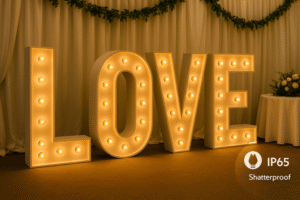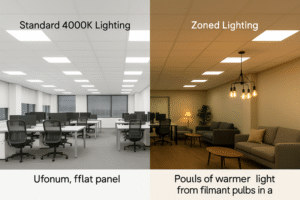Walking down the lighting aisle is confusing. You just want a lightbulb, but face a wall of terms like lumens, kelvin, and CRI, and worry you'll choose the wrong one.
To choose the right LED bulb, focus on Lumens for brightness, not Watts. Select the correct Color Temperature (Kelvin) for the room's mood, and check the Color Rendering Index (CRI) for accurate, vibrant colors.
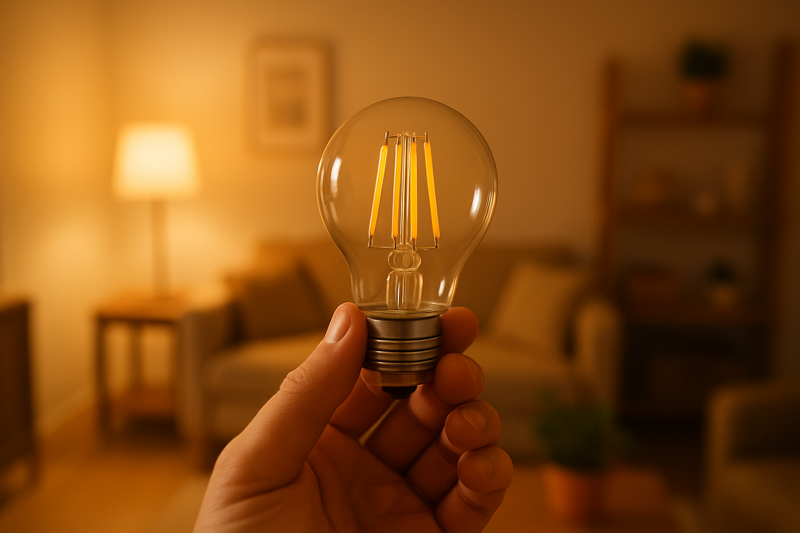
A friend recently renovated his kitchen and called me to complain. "Wallson," he said, "I spent a fortune on these beautiful wooden cabinets, but at night they just look... dull and yellow. And the lighting feels as harsh as a hospital." He had made the two most common mistakes: he chose bulbs with a low Color Rendering Index (CRI), which washed out the natural color of the wood, and a high Color Temperature (Kelvin) that was completely wrong for a relaxing home environment. As a manufacturer, I see these simple but costly mistakes all the time. Getting the light right is just as important as choosing the right paint color or furniture, and thankfully, it's much easier to fix once you know what to look for.
Are You Still Thinking in Watts Instead of Lumens?
You need to replace an old 60-watt bulb, so you grab a "60-watt equivalent" LED. But when you install it, the brightness just doesn't feel right, leaving you with an inconsistent lighting scheme.
Lumens (lm) measure a bulb's actual brightness. Watts only measure energy use. To get the right brightness every time, you must stop thinking about watts and start choosing bulbs based on their lumen output.
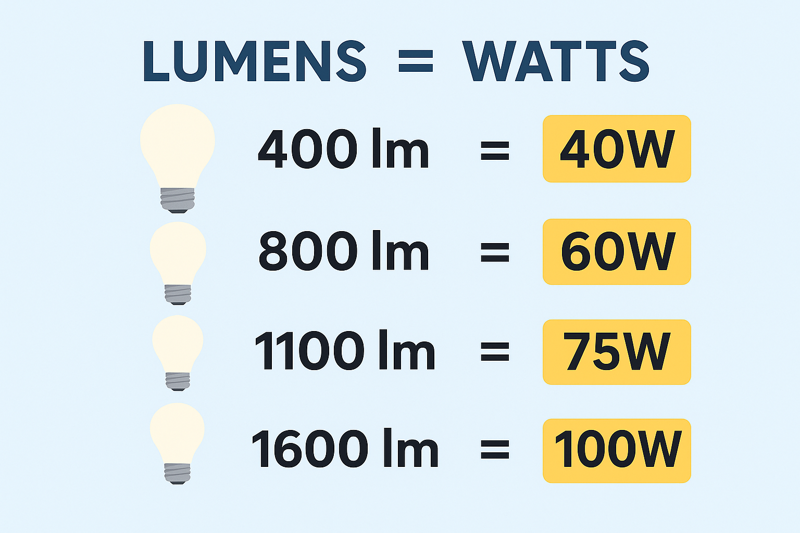
This is the biggest mental shift we have to make, and it's something I frequently discuss with our B2B clients, even experienced buyers like Jacky in the United States. For a century, with inefficient incandescent bulbs, there was a direct link between energy use (Watts) and brightness. More watts meant a brighter bulb. It was simple. But with hyper-efficient LEDs, that link is broken. A 10-watt LED bulb from us can be brighter than a cheap 12-watt bulb from another factory. The Wattage number now only tells you how much electricity you'll use, not how bright the room will be. Focusing on Lumens is the only way to guarantee consistent brightness. This is critical for homeowners who want an even look, and even more critical for our business customers who need to deliver predictable results to their own clients. Insisting on lumen specifications ensures that the 100th bulb they install looks exactly the same as the first.
Your Quick Guide to Lumens for the Home
Forget "watt equivalents." Memorize these lumen ranges for a much more accurate result.
| Room/Task | Old Incandescent Wattage | Recommended Lumens (lm)1 |
|---|---|---|
| Accent/Mood Lighting2 | 25W - 40W | 200 - 450 lm |
| Living Room Lamps | 60W | 800 lm |
| Kitchen/Bathroom (Main Light) | 75W | 1100 lm |
| Workshop/Reading Area | 100W | 1600 lm |
Is the "Color" of Your White Light Wrong for Your Room?
You installed new LED lights in your living room hoping for a cozy feel, but instead, it feels sterile and clinical. Or your home office light is so warm and yellow that you feel sleepy.
The "color" of white light is measured in Kelvin (K). Lower Kelvin (2700K) produces a warm, cozier light, while higher Kelvin (5000K) produces a cool, energizing light similar to daylight. Matching the Kelvin to the room's function is essential.
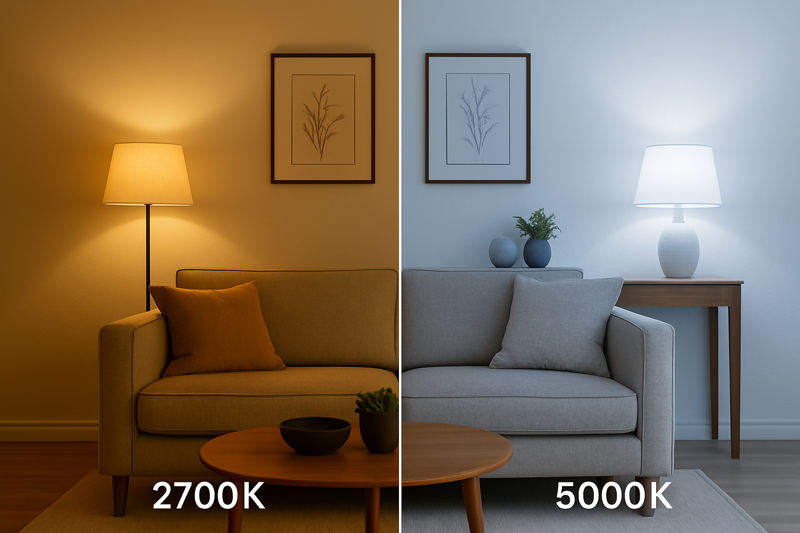
This is the mistake my friend made in his kitchen, and it's the element that has the biggest impact on a room's atmosphere. People often mistakenly buy "Daylight" bulbs (5000K+) for every room, thinking "brighter is better." But the crisp, blue-toned light of high-Kelvin bulbs is designed to mimic the sun at noon. This is great for task-oriented spaces where you need to be alert and focused, like a workshop, a laundry room, or a home office. However, in spaces meant for relaxation like a bedroom or living room, that same light can feel harsh and prevent your body from winding down in the evening. As a rule of thumb, you should treat Kelvin like the light of the sun throughout the day. Energizing, cool light in the morning and for tasks, and warm, calming light in the evening to relax. Our most popular products for the US and Netherlands markets are our LED filament bulbs in the 2200K-2700K range, precisely because they create that warm, inviting atmosphere that makes a house feel like a home.
Choosing the Right Kelvin for Every Room
- 2200K - 2700K (Warm White3): Creates a cozy, intimate, and relaxing atmosphere. Perfect for bedrooms, living rooms, and dining rooms. This is the classic color of an old incandescent bulb.
- 3000K - 4000K (Neutral/Cool White): A clear, bright, and welcoming light. Excellent for kitchens, bathrooms, and home offices where you need good visibility for tasks without the harshness of daylight bulbs.
- 5000K+ (Daylight4): An intense, blue-toned light that mimics direct sunlight. Best used for task-specific areas like garages, workshops, and basements, or for security lighting.
Why Do Colors in Your Home Look Dull and Lifeless?
You've decorated your home with colorful furniture, art, and fabrics. But under your new lights, the vibrant reds look brownish, and skin tones look washed out and unhealthy.
This is caused by a low Color Rendering Index (CRI). CRI measures a bulb's ability to show colors accurately. For a home, always choose bulbs with a CRI of 90 or higher to ensure everything looks vibrant and natural.
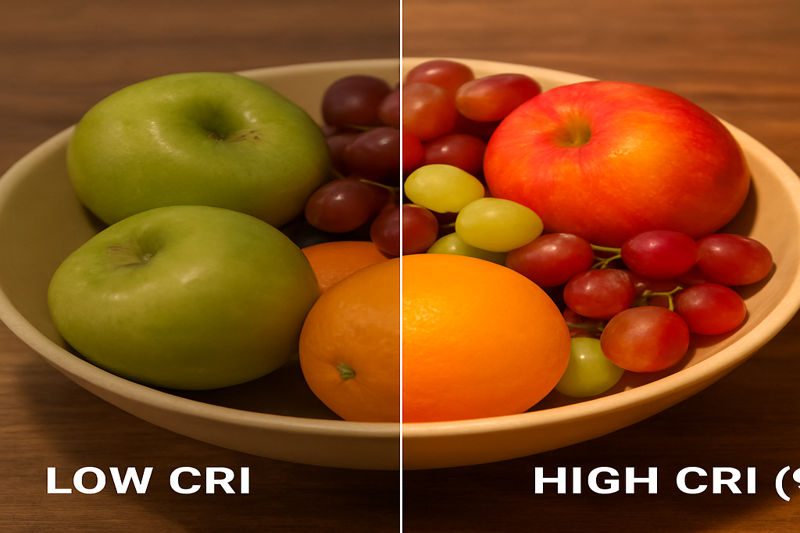
CRI is probably the most overlooked specification on the box, but it's the one that separates a good quality bulb from a poor one. It's a scale from 0 to 100, where 100 is the equivalent of perfect midday sunlight. Cheap, low-quality LEDs often have a CRI around 80. While the light might be bright (high lumens) and the right color temperature (good Kelvin), a CRI of 80 will fail to render deep reds, rich blues, and natural wood tones correctly. Everything looks a bit flat and grey. This is a major pain point for our customers. As a manufacturer committed to quality, we've invested heavily in ensuring all our consumer-facing bulbs, like our LED filaments and G9s, have a CRI of 90+. This means the light we produce shows colors as they are truly meant to be seen. For a homeowner, this means their design choices will shine. For a retailer using our lights, it means their products will look more appealing to customers. It is a detail that makes a world of difference.
Why Do Your New "Dimmable" LED Bulbs Flicker and Hum?
You replaced your old bulbs with "dimmable" LEDs and connected them to your existing dimmer switch. Now they flicker annoyingly at low levels, make a buzzing sound, or don't dim smoothly.
Not all dimmable LEDs work with all dimmer switches. Most flickering and humming is caused by an incompatibility between a modern LED bulb and an old dimmer switch designed for high-wattage incandescent bulbs.
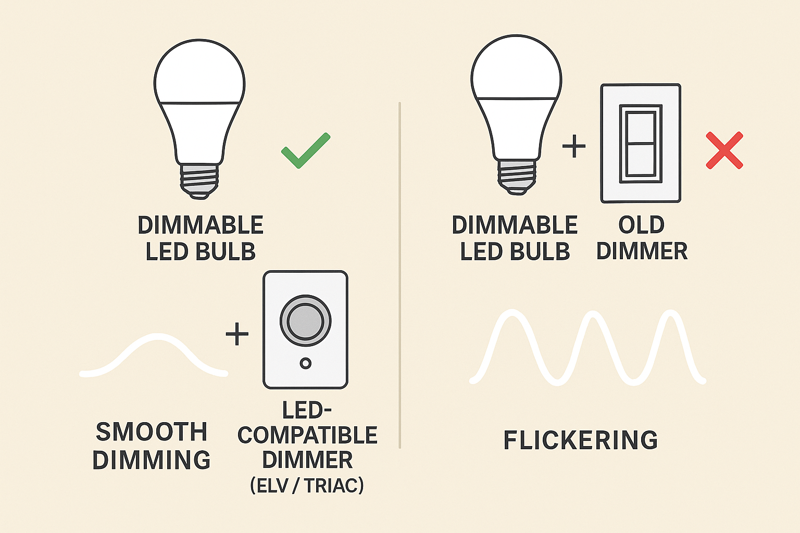
This is the number one technical problem we help our distributors and their customers solve. People rightly assume that if the bulb says "dimmable" and they have a dimmer switch, it should just work. But the technology is completely different. Old dimmers, called leading-edge dimmers, worked by cutting off the power very crudely, which was fine for a simple incandescent filament. LEDs are complex electronic devices. They need a much smoother and more sophisticated type of dimmer, typically called a trailing-edge, ELV, or simply an "LED-compatible" dimmer. Using the wrong one is like trying to run modern computer software on a twenty-year-old machine. It might technically "work," but it will be full of glitches. The solution is simple: when you upgrade to dimmable LED bulbs, you must also upgrade your dimmer switch to a modern, compatible model. This small extra step ensures a smooth, silent, and flicker-free dimming experience from 100% down to 10%.
The Dimming Checklist
- Check the Bulb: Ensure the packaging explicitly says "Dimmable5." Not all LEDs are.
- Check the Switch: Look at your dimmer switch. If it's old, it's almost certainly not designed for LEDs.
- Upgrade the Switch6: Replace old dimmers with new switches marked as "LED," "CFL/LED," or "ELV." This is the most reliable way to prevent problems.
- Buy Quality: As a manufacturer, we design our dimmable circuits to be as compatible as possible, but pairing a high-quality bulb with a modern dimmer is the only guaranteed path to success.
Conclusion
Choosing the right LED bulb is simple when you focus on lumens for brightness, kelvin for mood, and a high CRI for color. Avoid these common mistakes for beautiful, functional, and efficient home lighting.
Understanding recommended lumens helps you choose the right lighting for each room, enhancing comfort and functionality. ↩
Exploring accent/mood lighting options can transform your space, creating the perfect ambiance for relaxation or entertainment. ↩
Explore how Warm White lighting can enhance the ambiance of your home, making spaces feel cozy and inviting. ↩
Discover the advantages of Daylight lighting for task-oriented areas, boosting focus and energy in your workspace. ↩
Understanding 'Dimmable' is crucial for selecting the right LED bulbs, ensuring compatibility and optimal performance. ↩
Upgrading your dimmer switch can enhance your lighting experience and prevent flickering, making it worth exploring. ↩






